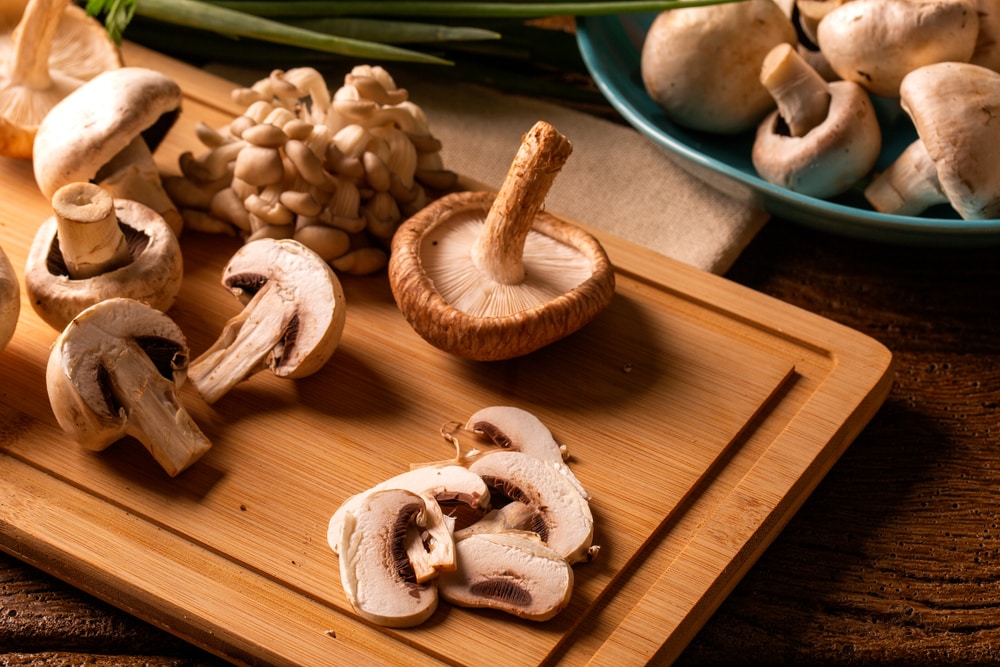
Mushrooms have become common in the culinary world and have actually been around for centuries for their umami and other unique flavors. Even more, mushrooms are a healthy addition to the dishes, and maitake vs. shiitake are two commonly used mushrooms. Both these mushrooms are culinary ones and have been a part of traditional Asian medicines for centuries.
These mushrooms offer nutrients as well as bioactive components that support health and fitness goals. So, if you want to know more about these mushrooms, read on!
Maitake vs Shiitake Mushrooms
According to research, there are over 10,000 species of mushrooms out there, but only a handful of them are termed functional mushrooms. Having been used for medicinal purposes for years, there are various other benefits, and these two mushrooms have scientific backing when it comes down to their benefits!
Maitake
This mushroom is known for its fan-like and rippled structure which is quite distinctive. Maitake mushrooms have a woodsy and rich flavor and have a delicious flavor when sautéed in oil or butter. Sauteeing can bring rich flavor and unique aroma to whichever recipe it’s added to. For the most part, these mushrooms are seen in the temperate and northern forests of Europe and Asia.
In addition, in the eastern United States and Canada, it grows around oak trees, especially on the base. Maitake is termed as sheep head and hen of the woods mushrooms in Canada and the U.S. They are commonly found in the wild, but land development and foraging resulted in limited availability. However, they are now grown and cultivated at a commercial level.
The commercial cultivation is done at the indoor facilities. On the other hand, we do want to add that these mushrooms are hard to spot in supermarkets. If you have to use them for your culinary experience, it’s best to sear them to create a crisp texture, and it actually makes a great side dish. In addition, it can be topped on the pizza and actually taste amazing.
The best thing about maitake is that it can actually elevate the flavors of other mushrooms. For instance, if you are having cremini mushrooms, add some chopped maitake mushrooms, and the overall flavor palette will be enhanced. Also, if you are worried about legality, it’s legal and is performance-enhancing.
Shiitake
It wouldn’t be wrong to say that shiitake mushrooms are the characteristic mushrooms and boast the unique shape of curved stems, while the cap has gills on the underneath path and is shaped like umbrellas. These are edible mushrooms and have a rich and woody flavor when they are properly cooked. Shiitake mushroom has a meaty texture.
The addition of shiitake mushrooms’ caps will add the umami aspect to the recipes. For the most part, it can be used in soups, stir-fries, stews, and pasta. The stems are hard to consume, but they can impact better flavor when added to soups, stews, and stocks (it’s a must-have for stocks if you want rich flavor). Shiitake can be easily grown in the humid and warm climate in southeast Asia.
For the longest time, shiitake mushrooms have been cultivated in Japan and China for centuries, but they are also grown in the United States. However, in the United States, they are grown in a controlled ecosystem by creating optimal conditions. Indoor cultivation is done by mycologists and is actually free of pollutants and toxins.
They first originated in Asia and can be purchased in dried as well as fresh form. The flavor is meaty and has lower water content, leading to a chewy texture. However, to get the best performance, they need to be cooked and transformed. In the majority of cases, the stems have to be removed, especially when they are woody and tough. These mushrooms boast a delicate and pleasant texture, which is why they are cooked for a minimal time. For the same reason, you need to add them lastly into stock and soup.
The bottom line is that both these mushroom varieties are amazing and are a perfect addition to different recipes. However, they can be hard to find in your local grocery store, but the Asian or specialized supermarkets might have them in the canned form!